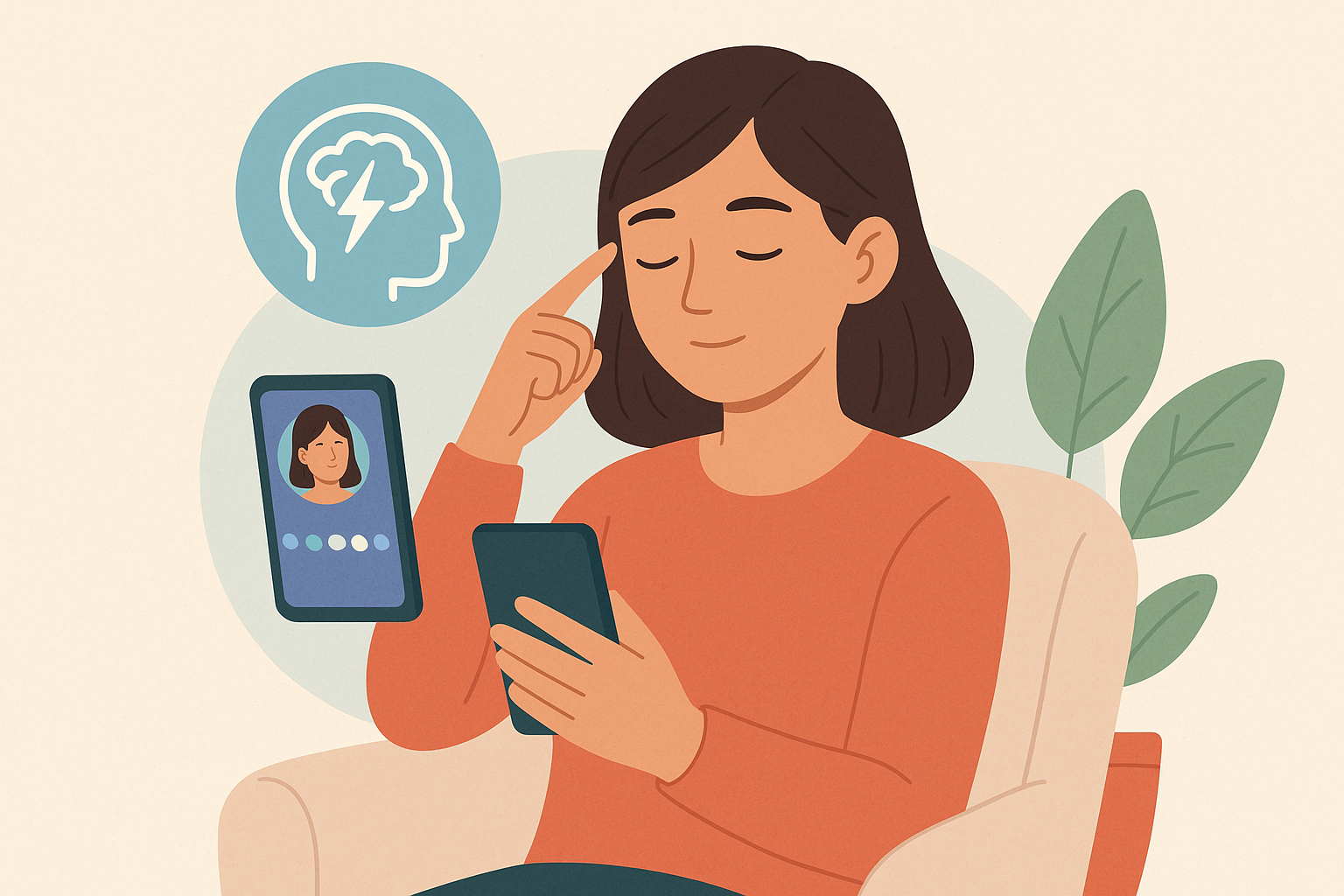Learning Center
Everything you need to know about EmEase and EMDR therapy.

Getting Started with EmEase
Begin your healing journey with our comprehensive guide to using EmEase effectively and safely.
Read the GuideEMDR Fundamentals

The Adaptive Information Processing Model: Understanding How Our Minds Heal
Learn about the theoretical foundation of EMDR therapy and how our minds naturally process experiences for healing and growth.

The Science Behind EMDR: How It Works and Why
Understand the scientific principles and research behind EMDR therapy, including how bilateral stimulation affects the brain and helps process traumatic memories.

Self-EMDR vs. Therapist-Led EMDR: Understanding the Differences
Compare self-administered and therapist-led EMDR therapy approaches to understand which option might be right for your healing journey.

What is EMDR? Understanding Eye Movement Desensitization and Reprocessing
Learn about Eye Movement Desensitization and Reprocessing (EMDR) therapy, how it works, and how it can help you process difficult memories and emotions.
Using EmEase Effectively

Understanding Bilateral Stimulation Options
Learn about the different types of bilateral stimulation available in EmEase and how to choose the right option for your processing needs.

Creating Meaningful Targets for EMDR Processing
Learn how to create effective targets for your EMDR processing sessions with EmEase. Understand what makes a good target and how to define them for optimal results.

Getting Started with EmEase: Your Guide to Self-Directed EMDR
A comprehensive guide to getting started with EmEase, covering everything from account setup to completing your first processing session and building a sustainable practice.

Designing Your Processing Environment
Learn how to create an optimal physical and mental environment for your EMDR processing sessions with EmEase.

Tracking and Interpreting Your Progress
Learn how to track and understand your progress in EmEase, including using distress level charts, session notes, and recognizing real-life changes.
The Processing Journey

Grounding Techniques Explained
Learn about effective grounding techniques to help you stay present and regulated during EMDR processing with EmEase.

Integrating EMDR into Your Healing Journey
Learn how to integrate EMDR processing work into your broader healing journey and create lasting positive change with EmEase.

Managing Emotional Intensity During EMDR Processing
Learn effective strategies for managing emotional intensity during EMDR processing with EmEase, including practical techniques and self-care approaches.

What to Expect During EMDR Processing
Learn about common experiences during EMDR processing sessions with EmEase, including emotional waves, physical sensations, and memory changes.
Safety and Self-Care

Building Emotional Resilience Through EMDR
Learn how to develop emotional resilience through EMDR processing work with EmEase, including practical strategies and daily practices.

Creating Your Emotional Safety Plan
Learn how to create a comprehensive emotional safety plan to support your EMDR processing work with EmEase.

Essential Self-Care Practices During EMDR Work
Learn essential self-care practices to support your emotional wellbeing during EMDR processing work with EmEase.
Frequently Asked Questions
General Questions
How often should I use EmEase?
We recommend starting with 1-2 sessions per week. Listen to your body and emotional state - if you're still processing from a previous session, wait until you feel stable before continuing.
Is EmEase a replacement for therapy?
No, EmEase is not a replacement for professional therapy. While it can be a valuable tool for processing mild to moderate emotional difficulties, it works best as a complement to professional treatment, especially for complex trauma or severe conditions.
How quickly will I see results?
Everyone's healing journey is unique. Some people notice changes after a few sessions, while others may need more time. Consistent, gentle practice often yields better results than rushing the process.
Technical Questions
What's the difference between horizontal and hourglass movement patterns?
Horizontal patterns move side-to-side in a straight line, which many find easier to follow. The hourglass pattern creates a figure-8 movement that some find more engaging. Start with horizontal and experiment as you become comfortable.
Should I use visual stimulation, audio, or both?
Start with visual stimulation alone. Once comfortable, you can experiment with audio or combined stimulation to find what works best for you. Some people find one type more effective than others.
Processing Questions
What if I feel worse after a session?
Temporary increases in distress can be normal as your brain processes emotions. If distress persists beyond 48-72 hours or feels unmanageable, pause processing and consider consulting a mental health professional.
How do I know when a target is fully processed?
A target is typically considered processed when thinking about it no longer causes significant distress (0-2 on the distress scale) and you can hold a positive belief about yourself in relation to the experience.
Safety Questions
When should I seek professional help?
Seek professional help if you experience persistent distress, suicidal thoughts, dissociative symptoms, significant disruption to daily functioning, or if processing consistently leaves you feeling worse.
Is it normal to feel tired after sessions?
Yes, feeling tired after processing is common. Your brain is doing significant work during EMDR. Plan for rest after sessions and practice good self-care.
Still Need Help?
Can't find what you're looking for? Our support team is here to help.
Submit a Ticket